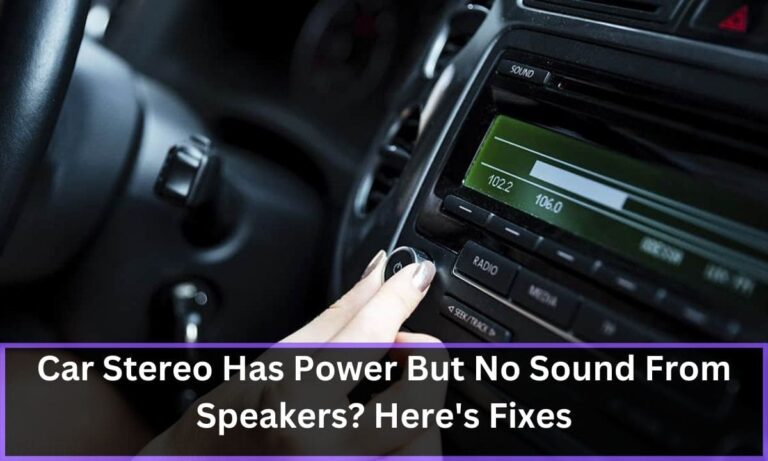Cars Mastery Guide

Cars are four-wheeled motor vehicles primarily used for transportation. They have become an essential part of modern life, providing convenient personal mobility for millions of people around the world. This guide will provide a comprehensive overview of cars, their history, main components, how they work, different types, buying considerations, maintenance and more.
Table of Contents
A Brief History of Cars
The history of cars dates back to the late 18th century when the first steam-powered vehicles were invented. However, gasoline-powered internal combustion engine cars, as we know them today, originated in Germany and France in the late 19th century.
Some key events in the history of cars:
- 1769 – Nicolas-Joseph Cugnot builds the first self-propelled vehicle, a steam-powered tricycle.
- 1806 – François Isaac de Rivaz designs the first internal combustion engine powered by a hydrogen and oxygen mixture.
- 1886 – Karl Benz patents the first gasoline-powered automobile, the Motorwagen.
- 1908 – Ford Model T is introduced, the first mass-produced car selling over 15 million units.
- 1913 – First moving assembly line for car production introduced by Ford to reduce production time.
- 1930s – Hydraulic brakes, independent suspension, and synchromesh gearboxes become common, improving safety and performance.
- 1970s – Catalytic converters introduced to reduce toxic emissions from car exhausts due to growing environmental concerns.
- 1990s – Onboard computers with electronic fuel injection and complex transmission systems become standard, increasing efficiency.
- 2000s – Hybrid and electric vehicles emerge as alternatives to gasoline-powered cars aiming to reduce dependence on fossil fuels.
- Today – Self-driving car technology is being developed with autonomous vehicles already on roads undergoing testing.
Main Components of a Car
Cars are complex machines with hundreds of individual parts working together. The major components of a car include:
Chassis and Body
This provides the supporting frame or structure of the car. The chassis holds the body and engine components together in one unit. The body is the external design or “shell” of the car covering the internal parts. Modern car bodies are usually made of steel or aluminum.
Engine
This is the powerhouse of the car, generating drive by converting fuel into mechanical energy. Most cars today have internal combustion engines, where fuel is burned within cylinders causing pistons to move up and down, which rotates the crankshaft. This ultimately powers the wheels.
Transmission
The transmission allows the gear ratio between the engine and wheels to change as the car speeds up or slows down. This includes the clutch, gearbox, prop shaft, differentials and axles. Automatic transmissions change gears automatically based on speed. Manual transmissions require the driver to change gears manually.
Suspension
The suspension system includes springs, shock absorbers and linkages that connect the wheels to the chassis. It absorbs bumps and vibrations from the road to provide a smooth ride. The suspension allows the wheels to move vertically and enables steering.
Steering System
This allows the driver to control the direction the vehicle moves in. The main components are the steering wheel, steering column, universal joints, rack and pinion gearbox and tie rods connecting to the wheels. Power steering uses hydraulic assistance to reduce steering effort.
Brake System
Brakes slow down and stop the car by converting its kinetic energy into heat energy. Disc brakes are commonly used on the wheels. The brake pedal activates the master cylinder to push brake fluid through the hydraulic lines applying force to the brake pads against the rotors.
Electrical System
The electrical system includes the battery, alternator, distributor, spark plugs, wires and various sensors and actuators. It generates, stores and distributes electric power throughout the car for the ignition system, lights, computer, etc.
Wheels and Tires
Cars ride on four wheels assembled with pneumatic tires. The tires provide traction by gripping the road. They absorb shocks and reduce vibrations from the road. Wheels are usually made from steel, while tires from rubber composites.
How Cars Work?
Understanding how cars work helps drivers maintain and operate them properly. Here’s a brief overview:
- Fuel (gasoline or diesel) and air get combined in the engine cylinders. The air-fuel mixture is compressed and ignited by spark plugs.
- The burning mixture expands rapidly due to combustion. This drives the piston down, which turns the crankshaft through connecting rods.
- The crankshaft sends power to the transmission and eventually rotates the wheels, propelling the car forward.
- The battery powers a starter motor which spins the engine to start it. Alternators recharge the battery while driving.
- Pressing the accelerator pedal feeds more fuel for increased engine power. Steering wheels turn front wheels for steering the direction.
- Brakes use hydraulic pressure to stop the wheels from turning, slowing the car. Brake pads grip brake rotors attached to wheels to create friction.
- The transmission and gearbox appropriately adjust rotational speed and torque between engine and wheels. Clutches allow smooth gear changes.
- Suspensions support vehicle weight and dampen impacts from road irregularities to improve ride comfort and handling.
- Electronic control units and computers precisely control timing and optimize performance. Sensors provide feedback to manage various systems.
So in summary, controlled explosions in the engine turn chemical energy in fuel into mechanical rotational energy ultimately powering the car forward. Steering, brakes, transmission and suspension components allow control of direction, speed and ride comfort.
Types of Cars
There are many types of cars designed for different purposes and lifestyles. Here are some of the main categories:
Sedans
The most common type of passenger car, sedans have a boot separated from the passenger cabin. Sedans range from compact economy models to full-size luxury vehicles. Popular sedans include the Honda Civic, Toyota Camry, BMW 3 Series and Mercedes Benz C-Class.
SUVs
Sport utility vehicles have a rugged body, high ground clearance and ample cargo space. They offer more passenger and cargo capacity than sedans. SUVs include the Ford Explorer, Jeep Grand Cherokee, Toyota RAV4 and Land Rover Range Rover.
Pickup Trucks
Trucks have an open cargo bed behind the passenger cabin. They are popular as work vehicles and for hauling cargo. Best-selling trucks include the Ford F-150, Chevrolet Silverado, Ram 1500 and GMC Sierra.
Hatchbacks
Hatchback cars have a rear door that opens upwards to access a cargo area behind the back seats. Example hatchbacks are the Volkswagen Golf, Mini Cooper, Kia Rio and Mazda 3.
Coupes
Coupes are sporty 2-door cars with a sloping roofline and small rear seats. The Ford Mustang, BMW 2 Series, Chevrolet Camaro and Audi TT are popular coupe models.
Convertibles
Convertible cars have retractable soft tops allowing open air driving. They offer a fun driving experience with increased wind and road noise. Some convertibles are the Mazda MX-5 Miata, Mini Cooper Convertible and Chevrolet Corvette.
Electric Cars
Electric vehicles use electric motors powered by batteries instead of gasoline engines. They produce zero emissions making them environmentally friendly. Well known electric cars are the Tesla Model 3 and Model S.
Luxury Cars
Luxury or premium cars provide increased comfort, performance, safety and status appeal. Brands like Mercedes-Benz, BMW, Audi, Lexus and Cadillac are considered luxury.
Buying Considerations
Purchasing a new or used car is a major decision influenced by many factors:
Budget
Determine how much you can reasonably afford to spend based on your income and expenses. New cars often range from $20,000 for basic models to over $100,000 for high-end vehicles. Used cars 3-5 years old offer significant savings over new.
Fuel Efficiency
Choose vehicles with higher mpg fuel economy ratings to save on long-term gas costs. Hybrids like the Toyota Prius offer among the best efficiency. Electric cars have the lowest operating costs.
Safety Ratings
Opt for vehicles that score high in government crash tests and have modern safety features like airbags and collision avoidance tech. Larger vehicles like SUVs also rate higher in occupant protection.
Reliability
Research a model’s track record for mechanical problems and costly repairs using consumer reviews. Japanese brands like Honda and Toyota have excellent reputations for dependability.
Performance
If acceleration, handling and braking are priorities, consider sportier vehicles with more powerful engines and tuned suspensions. Test drive different models to assess performance.
Passenger and Cargo Space
Evaluate rear seat legroom and cargo capacity needs if regularly transporting passengers or gear. SUVs and minivans offer the most spacious passenger and cargo room.
Features
Choose models with features that best match your lifestyle like advanced infotainment systems, parking assistance, adaptive cruise control, Apple CarPlay, etc. Test features to ensure usability.
Resale Value
Vehicles with higher resale values offer lower depreciation costs making them less expensive over the long run. Trucks and SUVs typically have better resale than cars.
Car Maintenance
Proper maintenance is vital for a car’s performance, fuel efficiency and longevity. Here are some key maintenance tips:
- Check engine oil, coolant, brake, transmission and power steering fluids periodically and top up if needed. Change engine oil and filters regularly per the manual.
- Inspect tires frequently for inflation, tread wear and rotation. Make sure they are properly aligned.
- Replace dirty air filters, fuel filters, spark plugs and ignition system components per schedule.
- Check battery, lighting, wiper blades and emissions according to intervals.
- Inspect suspension, steering and driveline components periodically. Lubricate parts like wheel bearings if required.
- Check transmission fluid levels and condition. Change at appropriate intervals.
- Drain and replace coolant, brake, power steering and transmission fluids as specified.
- Get tune-ups to inspect ignition, filters, belts etc. Computerized scans also check for issues.
- Wash and wax your car regularly to protect the paintwork. Use touch up paint on chips.
- Clean the interior upholstery and touch up any worn areas on trim. Vacuum carpets and floor mats.
Following the manufacturer’s maintenance schedule in the owner’s manual is highly recommended to keep your car running reliably for years.
Driving Tips for Beginners
For new drivers, here are some useful car driving tips:
- Get familiar with the vehicle by reading the owner’s manual and understanding the controls.
- Adjust seat position, mirrors and steering wheel appropriately so all controls are easily accessible.
- Start slowly in empty parking lots practicing turns, stopping, parking etc. before driving on roads.
- Follow speed limits and maintain safe distances from other vehicles around 2-3 seconds gap between your car and the one ahead.
- Scan ahead and check rearview mirrors constantly to be aware of traffic conditions and hazards.
- Signal well in advance before turning and changing lanes so others can anticipate your moves.
- Gently brake for stops – don’t make sudden jerky stops except in emergencies.
- Make smooth and gradual starts and accelerate gently from stops. Avoid jackrabbit jumps.
- Look well ahead so you can coast to stops or decelerate gradually by taking your foot off the accelerator earlier.
- Keep both hands firmly on the steering wheel with good grip to stay in full control.
- Identify clear gaps before attempting to change lanes or make turns across oncoming traffic. Avoid cutting off others.
- Drive defensively and anticipate possible mistakes other drivers might make on the road around you.
With enough practice accompanied by a licensed driver, new drivers can develop good habits ensuring safety on the road. Further driver education courses can also enhance skills.
Autonomous Car Technology
Autonomous or self-driving car technology is advancing rapidly with vehicles able to sense the environment and navigate without human input. Here’s an overview:
- LIDAR, cameras, radars and sensors continuously scan the surrounding 360 degrees to detect roads, sidewalks, traffic lights, signs, pedestrians, cyclists, objects etc.
- Artificial intelligence software processes sensor data to identify everything and pinpoint the vehicle’s precise location on high resolution maps.
- The automated driving system plots the optimal path forward analyzing speed limits, road conditions and nearby people and vehicles.
- Advanced control systems including steering, braking and throttle are overridden to follow the planned route, adjusting accurately in real-time to obstacles and dynamic conditions.
- V2V (vehicle-to-vehicle) and V2I (vehicle-to-infrastructure) communications allow cars to wirelessly share telemetry data and intent with each other and traffic management systems for enhanced coordination.
- Redundant systems provide backup if certain sensors fail. Machine learning algorithms keep improving decision making capabilities based on real world driving experience.
- Interior cameras and cabin microphones monitor driver attention levels to ensure they can takeover control if needed in semi-autonomous vehicles.
Fully self-driving vehicles could transform transportation in the future with improved safety, traffic flow and accessibility. But technological and regulatory challenges remain for widespread adoption.
Conclusion
From early steam cars to today’s sophisticated electric and autonomous vehicles, the automotive industry has made tremendous progress. Cars have become indispensable for personal mobility providing convenience and independence to millions. Understanding how they work helps drivers use them safely and efficiently. With countless models available, consumers should carefully assess their needs and preferences when choosing a new or used vehicle. Maintaining cars properly is also essential to enhance performance and longevity. The future points to even smarter and environmentally cleaner cars continuing to evolve and shape transportation.
Summary
- Cars originated in Europe in the late 1800s and spread globally in the 20th century led by mass production techniques of the automobile industry. Essential components like engines, transmission, suspension, steering and brakes have improved greatly over their history.
- Main parts including the engine, transmission, suspension, steering, brakes, electrical systems, wheels and tires work together in sequence to propel the vehicle forward and allow control.
- Many types like sedans, SUVs, trucks, hatchbacks, coupes and electric cars serve different passenger and cargo needs. Consumers should evaluate budget, efficiency, reliability, performance and features when purchasing.
- Following scheduled maintenance procedures like checking fluids, changing filters, inspecting components and replacing worn parts is vital for a car’s optimal performance and durability.
- New drivers should practice vehicle controls and follow basic rules like signaling, scanning surroundings and driving smoothly at safe speeds to develop sound habits.
- Autonomous technology uses sensors, artificial intelligence and advanced controls to enable self-driving. But technological and regulatory challenges remain for widespread adoption.
Cars have transformed personal mobility and will continue evolving with greener and smarter designs in the future. Understanding their rich history and how they work helps drivers use them safely and conscientiously.







